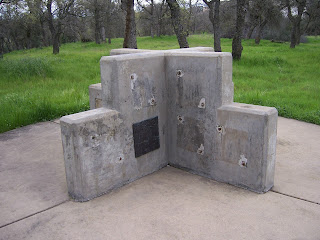I slept through The Royal Wedding, and will continue to sleep through the media coverage of anything the Royal Couple does from now on.
When I first married, I wore a $97, off-the-rack, cream-colored dress from the now defunct Weinstock’s in Sacramento. I bought matching pumps to go with the outfit, and tossed them after the ceremony. They were cruel shoes with high heels, and I can remember how they pinched and tore at my feet.
I was married in 1987, and divorced three days before 9/11. To this day, I can’t (and won’t) have a good time in Reno. I remember getting married at a worn, tired, wedding chapel across from the casinos with piles of dirty snow in the street. The chapel’s interior was dark and designed to look more like a funeral home. The maroon carpets and heavy drapes smelled like cigarettes, and a lighted, revolving display had wilting orchid corsages for sale.
The reverend was plastered and could barely stand. And at the end of my first marriage, I regret not having the drama of tossing my wedding band into the icy water of the Truckee River, like so many of disappointed and disgruntled divorced people before and after me.
It took me seven years before I decided to get married for the second time.
“You know what you’re getting into this time, don’t you?” asked my attorney when he found out about my upcoming second marriage. He carefully studied my face. “You do, don’t you? You can’t fail with the second one when you already made all the mistakes with the first one.”
Everything is cut and dried when you think like an attorney.
I’m on my second and final marriage. “Three strikes, you’re out,” can refer to baseball players or revolving-door California inmates, but not to me. A third marriage for me would mean I didn’t learn from my mistakes.
Shortly after my second wedding, my husband and I were in Hawaii with married couples from all over the United States who had been married for 50 years or longer. It was clear to me these couples truly loved each other. First impressions mean everything to me, and when I observed them as a group, I could see it, and I could feel it. It was in the way they looked at each other. It was the way they smiled, laughed and lightly touched each other as they spoke or picked at the lint (real or imaginary) in each other’s clothing.
“What are your secrets to being married so long?” I asked the woman sitting next to me.
She looked at me and smiled serenely.
I didn’t hear what she had to tell me. Right at that time, the train taking the tourists around the plantation was tooting its horn, and by the time it was done, she had pushed the tiny dish of poi aside and was attacking the rubbery chicken breast creation made for us Mainlanders. She was enjoying her luau meal, and I didn’t have the heart to ask her to repeat what she had tried to tell me.
I have found that marriage reflects life itself. It has its ups and downs. But you have to allow for change. In our mates and in ourselves, we either can go with it, cut ties or stay co-dependent and miserable. Even if we did nothing about our marriages, that would be a choice, too.
During the coverage of the Royal Wedding and anything else added to this so-called modern fairy tale, I entertained myself with the idea of being married to His Royal Highness and making him do things around the house like scrubbing the toilet or smiling as he walked the backyard for poop patrol. I could show Her Royal Highness something about making a fried chicken dinner with all the fixings or gutting trout and catfish after baiting the line and catching them. I could take her to the local auto junkyard and show her how to search for a grill to an ancient Ford 150.
Oh, don’t get me wrong. I wish The Royal Couple well. And, when it comes to elaborate weddings, I know better. Even the most memorable, well-choreographed wedding day doesn’t guarantee a meaningful and lasting marriage.
So whenever I hear a bride-to-be talking about her wedding plans with the eight bridesmaids and the honeymoon in Hawaii or the mother of the bride complaining about competing for that exclusive, but very expensive Victorian wedding location in the foothills, I have to smile. Experience has taught me to be grateful that the young, naïve girl who got married in the Reno wedding chapel during the 1980s is gone forever.


























